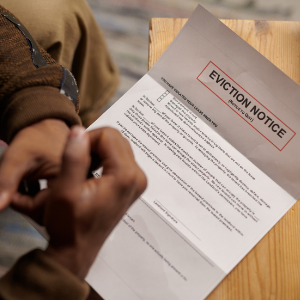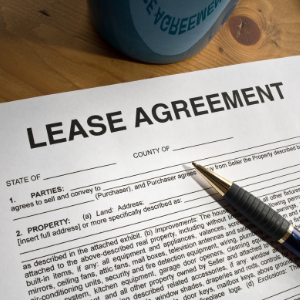
As the landscape of rental agreements evolves in Oklahoma, understanding the eviction process for 2025 is crucial for both tenants and landlords. This comprehensive guide explores the specific laws, timelines, and procedural steps that determine the duration of an eviction in Oklahoma City, OK. With detailed insights into the legal framework and practical advice, this page aims to equip readers with the knowledge needed to navigate the eviction process effectively. Whether you’re facing eviction or seeking to initiate one, staying informed about the latest legal developments can significantly impact the outcome of your case.
Key Highlights
- The eviction process involves issuing an initial notice and filing with the Oklahoma courts if the issue remains unaddressed.
- Common reasons for eviction include unpaid rent, lease violations, and property damage.
- Recent updates aim to strike a balance between fair housing practices and tenant protections in the state of Oklahoma.
- Serving eviction notices should be clear, legal, and ideally include direct communication with the tenant.
- Evictions in Oklahoma can take anywhere from 30 to 90 days, depending on the court’s schedule and the tenant’s response to the eviction notice.
Understanding the 2025 Oklahoma Eviction Process
In 2025, the Oklahoma eviction process remains intricate, encompassing a range of laws, timelines, and key steps. Whether you’re a landlord or tenant, understanding this procedure is crucial. The process begins with landlords issuing an eviction notice, which highlights specific legal grounds, such as unpaid rent or lease violations. Following this, the eviction timeline unfolds through various procedural steps, involving the courts and responses from the tenant. Familiarizing yourself with these essential components can help you navigate the eviction process in Oklahoma City more effectively. The sections below delve into key steps and common reasons for eviction, providing a comprehensive guide for all parties involved.
Key Steps in the Oklahoma Eviction Procedure

In 2025, various steps make up the eviction process in Oklahoma, and in this case, the steps are adhered to make the process as fair as possible while following the law. Both landlords and tenants are educated about the steps in the process to avoid procedural lapses while also providing an efficient resolution in the law.
The process begins once the landlord hands the tenant the eviction notice. The notice can be for the non-payment of rent, violation of the terms of the lease, or damage to the property. During this notice period, tenants can rectify the situation or leave the property. Several pieces of information can be provided to the tenant when the landlord seeks to evict the tenant. As a first step, before any legal procedures can begin, the notice period is essential, no matter the reasoning for the eviction.
Failure to respond or concern themselves with the steps outlined in the notice leaves an option available to the landlord to initiate an eviction suit before the relevant court in the state of Oklahoma. Such a suit serves to continue the process, which, for one, requires a writ, which in turn triggers a series of actions that ultimately might culminate in court proceedings. Following the filing, the court inquires about the time available to the parties to argue their respective positions before the court to schedule a hearing. In guaranteeing due process, the court must ensure that the tenant is given a full opportunity to rebut the claims for eviction, while the landlord is granted the right to argue their case.
One of the most important of the case preparation stages is the hearing, which is an equally important point for both parties. A good number of both groups seek the assistance of legal practitioners to facilitate a reasonable understanding of the duties that come with a contract under the Oklahoma jurisdiction. A judge will consider the arguments from both sides of the case– the lease contracts, pending payments, and available correspondence. The result of the consideration is the verdict. The court will issue a judgment for possession and, in turn, allow the landlord to proceed with the eviction. The subsequent actions on the tenant’s part will add further steps in the case, as the tenant might continue the case on appeal.
The final step in the eviction process is to remove the tenant from the premises once the judgment is no longer subject to contest. In the case the tenant does not leave on their own, the police can be called to assist in enforcing the eviction. It is essential to note, however, that police enforcement must comply with the legal guidelines outlined in Oklahoma to protect both the tenant’s and the landlord’s rights.
To be able to meet and understand the prerequisites of an Oklahoma eviction, it is essential to know and understand the procedure. These actions benefit the landlord’s interest as legal complications can be avoided, and the tenants gain an understanding of their rights and defenses. Following the eviction policies set by Oklahoma allows both parties to achieve an equitable and legal resolution.
Common Eviction Reasons in Oklahoma
Evictions in Oklahoma often stem from a few recurring causes, each requiring specific legal steps within the state’s eviction process. Understanding these common reasons helps both landlords and tenants navigate their responsibilities and maintain fair rental relationships.
The most common reason for eviction is non-payment of rent. Landlords rely on timely rent payments to manage property expenses, cover maintenance costs, and sustain overall financial stability. When tenants fail to pay rent as agreed, it disrupts this balance and often leads landlords to begin the formal eviction process. Oklahoma law allows landlords to issue a five-day notice for overdue rent, giving tenants a brief opportunity to catch up on payments or face potential eviction proceedings.
Another major cause of eviction in Oklahoma involves lease agreement violations. These breaches may include allowing unauthorized occupants or pets, engaging in prohibited activities, or subletting without prior approval. Such actions violate the terms of the lease and undermine the trust and expectations established between the landlord and tenant. When lease violations occur, landlords are entitled to take legal action to protect their property and uphold contractual agreements.
In some cases, evictions are filed due to illegal activities or misuse of property. Engaging in criminal behavior, such as drug-related offenses or other unlawful conduct on the premises, can expedite the eviction process. Landlords are responsible for maintaining safe and lawful environments for all tenants, and Oklahoma courts typically view these cases as serious grounds for immediate legal action.
Property damage and disturbance of the peace also frequently lead to eviction filings. Excessive damage can reduce a property’s value and impose financial burdens on landlords, while ongoing noise complaints or disruptive behavior can affect other tenants’ right to quiet enjoyment. These issues, when substantiated, are recognized as valid reasons for eviction under Oklahoma law.
Recognizing these common causes of eviction benefits both parties. Landlords gain clarity on when pursuing eviction is justified and how to remain compliant with legal procedures. Tenants, on the other hand, can use this understanding to stay in good standing—by paying rent on time, following lease rules, and maintaining open communication with property owners.
As Oklahoma’s housing regulations continue to evolve into 2025, staying informed about eviction procedures and lawful reasons for removal remains essential. Awareness and compliance help foster fair rental practices, minimize conflict, and support a more stable and cooperative housing market across the state.
If these new regulations feel overwhelming, or if your rental situation has become too time-consuming, Revive Real Estate, LLC can help simplify your next move. Whether you need to sell your Oklahoma City house fast or want to explore cash offers in Norman or Yukon, their team provides fair, transparent solutions tailored to your needs.
Navigating Eviction Laws in Oklahoma
Navigating Oklahoma’s eviction laws requires a thorough understanding of both recent legal updates and the rights afforded to both tenants and landlords. The legal landscape is shaped by evolving state-specific legislation that impacts how evictions are conducted. As Oklahoma continues to refine its laws, staying informed about these changes is crucial for compliance and the protection of rights. Exploring the legal rights of all parties involved ensures an informed approach to the eviction process, striking a balance between fairness and the legalities governing eviction proceedings in the state.
| Legal Updates | Tenant Rights | Landlord Obligations | Health Compliance |
| Recent legislation extends the eviction notice period from 5 to 10 days for non-payment of rent. | Tenants have the right to contest evictions in court and seek legal counsel. | Landlords must provide tenants with a written notice before initiating eviction proceedings. | Properties must pass health inspections for mold and pest infestations before renting. |
| Court hearings for evictions must be held within 15 days of filing. | Tenants can request a written explanation for any eviction notice received. | Failure to comply with health codes can delay or void eviction processes. | Regular maintenance checks are mandatory to prevent health hazards. |
| Amended statutes increase penalties for illegal lockouts or utility cutoffs. | Right to withhold rent if essential repairs are not addressed promptly. | Must keep detailed records of all tenant communications and repairs. | Landlords must provide proof of compliance within 30 days of tenancy. |
This table outlines the evolving legal landscape of Oklahoma eviction laws, highlighting the interplay between legal updates, tenant rights, and landlord obligations.
Recent Updates to Oklahoma Eviction Laws

In the State of Oklahoma, the process of eviction has gone through significant legal changes in the past few years, reflecting modulations in state housing policies along with the evolving standards of tenant protections. These changes have sought to streamline the eviction process, paying attention to landlords and tenants to ensure equitable outcomes within the legal framework.
Regarding the legal process, one fundamental change is the interval within which evictions have to be completed. The new pieces of legislation provide stronger evictions, and the law sets more structured notice periods, which, for the most part, stipulate the length of time a tenant is awarded to remedy a rental agreement breach, make rent payments, or make arrangements to leave. This change is in line with the Eviction policies of the State of Oklahoma, which protects against unjustifiable evictions. The law further insists that there is an obligation to retain several documents proving there is an assertion of legal evidence to evict a tenant.
Legal updates offer a new standard of responsibility for landlords. They are now obliged, in an eviction case, to submit evidence of lease violations, records of tenant communications, and documents verifying unpaid rent. Failure to submit these records will likely result in compromised evasion of legal procedure. These changes ensure landlords do not exhibit a combative stance that results in protracted litigation. Knowing these new rules assists property owners in Oklahoma in reinforcing their rule of property rationality with their property management rights.
Perhaps the most important of the new grounds for eviction focuses on public health and safety. Landlords must now, for the sake of avoiding legal headaches, bring all of their holdings up to the state health standard in a manner that avoids compromising any state legal obligations. If a tenant is evicted due to a lack of safe living conditions or the property is damaged in a manner consistent with an improper state of repair, maintenance, and health condition, the landlord must prove that all necessary health and maintenance conditions have been satisfied.
Collectively, these updates to Oklahoma’s eviction regulations represent the state’s ongoing effort to strike a balance between tenant protections, landlord rights, and public well-being. Staying informed about these legislative changes is essential for anyone involved in property management or renting in Oklahoma, as compliance not only ensures legal protection but also promotes fair and sustainable housing relationships.
To help navigate these changes, consider the following key aspects landlords and tenants should be aware of:
- Ensure compliance with the revised notice durations under the new legislation.
- Familiarize yourself with the changes to the eviction timeline to avoid potential legal pitfalls.
- Review the enhanced protections afforded to tenants under the current rules.
- Maintain updated records in accordance with the latest statutory demands.
- Understand the available legal avenues for resolving disputes in eviction matters.
These highlights offer a valuable guide to understanding Oklahoma’s evolving eviction landscape.
Legal Rights of Tenants and Landlords in Oklahoma
Regulating the relationship between owners and renters, as well as regulating rental transactions, remains the primary focus of Oklahoma Law. With this said, the rental industry would benefit from a clear understanding of the landlord-tenant relationship at the core of landlord-tenant disputes.
Tenants in Oklahoma are guaranteed the right to protection from arbitrary and unlawful eviction, as well as the right to housing that is not substandard. Before evicting a tenant, a landlord is required by law to follow proper, legally determined steps; otherwise, evictions are illegal. If an eviction is carried out that is found to be unjust, a tenant has the right to defend themselves, present evidence, protect their claim, and challenge it in a court of law. Such laws defend the tenant’s right to the peaceable enjoyment of a well-maintained and properly serviced rental unit, protection from unjust removal, and protection from unfair enforcement of lease violation removal by the landlord.
Under the law, a landlord is entitled to the right to a lease, to receive rent, and to exercise reasonable control over their property. Failing to pay rent, causing damage to the property, or breaching the lease on the tenant’s part gives the landlord the right to eviction, but only after sending a notice and complying with the tenant’s rights within Oklahoma’s eviction process timelines. If a landlord possesses the proper records and follows a region’s legal procedures, they can effectively fend off legal disputes while also safeguarding their assets.
Both landlords and tenants benefit from gaining insight into Oklahoma’s eviction laws. Tenants may obtain legal representation to fight against illegal evictions, while landlords may hire attorneys to ensure compliance with the law. The eviction process in Oklahoma City and beyond can be streamlined and made more transparent by ensuring that all parties adhere to legal obligations and their rights.
Understanding the Oklahoma Eviction Timeline
The Oklahoma eviction timeline is a crucial aspect for both landlords and tenants navigating the eviction process. Understanding the timeline helps anticipate key stages and prepares all parties involved for each step. This section provides a step-by-step guide detailing the process and duration of evictions, offering a comprehensive understanding of how long evictions typically take in Oklahoma City. We’ll explore the procedural nuances from the initial filing through to the conclusion, shedding light on vital factors that influence the eviction timeline.
Step-by-Step Guide to the Process and Duration
Both the landlords and the tenants should understand the legal steps in the Oklahoma eviction process for 2025. This will help avoid delays in the process. In most cases, the time between the eviction notice and the actual eviction is 30 to 90 days. As with most legal matters, the simplicity of the case, the schedules of the court, and the cooperation of the tenants all come into play.
The eviction process often begins with the landlord sending a notice to the tenants. This is a notice, which in most cases is centered around the payment of the rest or the violation of some relevant conditions of the lease. There is a format familiar to these letters, which any legal expert can describe, often referred to as a five-day notice, whereby the tenant is told beforehand that they have five days to either pay the outstanding rent or otherwise abandon the rented premises. If the tenant complies with the notice, the eviction process ends. If the tenant does nothing, the landlord will file for the court.
Should the tenant and the landlord agree, the tenant will win an “Eviction lawsuit (Forcible Entry and Detainer)”. This case will be filed in the Oklahoma court closest to the landlord. The courts will issue a case hearing two to three weeks after the case is filed. This is subject to the court’s current case. At this time, the landlord will have to inform the tenant that he has won the case, and then the other side will be able to submit an answer.
As outlined in the notice for court, the landlord, along with the tenant, shall appear for the court proceedings, where both parties shall be presenting their evidence, which includes lease documents, payment histories, and communications. The judge will evaluate the case and make a ruling.
- If the landlord wins, the court grants a judgment for possession, which allows the eviction to proceed.
- If the tenant contests the ruling or files an appeal, the process can extend for several more weeks or even months.
Once the court issues an eviction order, the landlord may request assistance from local law enforcement to remove the tenant if they refuse to leave voluntarily. This step typically takes 5 to 10 additional days, depending on sheriff availability and scheduling.
If you’re a property owner tired of waiting through this lengthy process, consider a faster option — Revive Real Estate, LLC can make you a cash offer for your Yukon property within 24 hours. They also serve nearby communities, such as Norman, Midwest City, and Yukon, providing you with flexibility and peace of mind when facing difficult tenant or financial circumstances.
How Long Does an Eviction Typically Take?

Currently, in Oklahoma City, the eviction process can take up to 90 days, depending on the specific case and relevant factors, such as the cooperation of the tenants, the reason for eviction, and the availability of the courts. In certain simple cases, the violation of the eviction notice can be resolved in a couple of weeks. However, on the other end of the spectrum, cases in which the tenant has initiated an appeal take significantly longer to resolve.
The process begins with the landlord issuing an eviction notice. Landlords often refer to this process as the Five-Day Notice for Non-Payment of Rent. This notice provides tenants with a short timeframe within which they are required to comply with the notice and, if they wish to remain in the property, pay the rent. If the tenants abide by the notice, the eviction process will be terminated. If the tenants do not take any action, the landlord has the right to file a formal eviction case in court.
In Oklahoma, as a landlord, once a tenant is residing on the property and an eviction does not occur, the landlord can apply for an eviction order in the Oklahoma courts. This process is a form of statement of action as it commences the legal process, so to speak. Depending on the local courts, the process can take between 2 and 3 weeks. Courts tend to take longer to process cases if they are overcrowded or if one party is simply stalling for time.
During the hearing, both parties present their evidence—such as lease agreements, payment records, and communication history. After reviewing the facts, the judge issues a decision.
- If the landlord wins, a judgment for possession is granted, allowing the eviction to proceed.
- If the tenant appeals or files additional motions, the process can be extended by several more weeks.
If the tenant does not vacate voluntarily after judgment, the landlord can request assistance from local law enforcement to remove the tenant. This final step may take an additional 5 to 10 days, depending on sheriff availability and scheduling.
Understanding the Oklahoma eviction timeline helps both tenants and landlords plan accordingly. Staying informed about 2025 eviction laws, maintaining accurate records, and following proper procedures ensures a fair, efficient, and legally compliant process. Whether you’re a property owner or renter, preparation and open communication can help prevent disputes and lead to smoother tenancy transitions.
Whether you’re dealing with difficult tenants, facing foreclosure, or simply need to sell your Oklahoma property quickly, Revive Real Estate, LLC is here to help — offering fair cash offers, fast closings, and stress-free solutions tailored to your situation. Contact us at (405) 669-6466 today!
Frequently Asked Questions
What is the first step in the eviction process in Oklahoma for 2025?
The first step in the eviction process in Oklahoma is for the landlord to issue a formal eviction notice to the tenant. This notice outlines the specific breach or reason for eviction, such as non-payment of rent or lease violations. It provides the tenant a stipulated period to remedy the issue or vacate the premises.
How long does the eviction process typically take in Oklahoma City, OK?
Evictions in Oklahoma City can take anywhere from 30 to 90 days. This duration depends on factors such as court schedules, tenant responses, and any potential appeals that may be filed.
What are common reasons for eviction in Oklahoma?
Common reasons for eviction include unpaid rent, lease violations, property damage, unauthorized occupants, and engaging in illegal activities on the property. Each of these reasons may necessitate specific legal measures within the eviction process.
What recent legal updates affect the eviction process in Oklahoma?
Recent updates to the Oklahoma eviction process include changes to the timeline for eviction proceedings and enhanced protections for tenants, ensuring fair housing practices. Landlords are now required to provide detailed documentation of any lease breaches or unpaid rents.
What steps should be taken to prepare for an eviction court appearance in Oklahoma?
Preparation for an eviction court appearance involves gathering necessary documentation, including the lease agreement, payment records, and all related correspondence. Both tenants and landlords should understand the legal arguments, anticipate opposing claims, and consider legal representation or counsel to present their case effectively.
Helpful Oklahoma City Blog Articles
- Selling A Condemned House In Oklahoma City
- Homeowners Insurance When Selling Your Oklahoma City House
- Oklahoma City Inheritance Laws
- Can You Back Out Of A Contract In Oklahoma City
- Documents For Selling Your Home In Oklahoma City
- Sell A House With Foundation Problems In Oklahoma City
- MLS Listing Options For Selling Your Home In Oklahoma City
- Sell Your Oklahoma City Home With An HELOC
- Cost Of Home Staging In Oklahoma City
- Red Flags Of A Poor Realtor In Oklahoma City
- Managing an Inherited House with a Sibling in Oklahoma City, OK
- How to Sell a House in Foreclosure in Oklahoma City, OK
- How Long Does an Eviction Process Take in Oklahoma City, OK
- How Much Does a Divorce Home Appraisal Usually Cost in Oklahoma City, OK?

